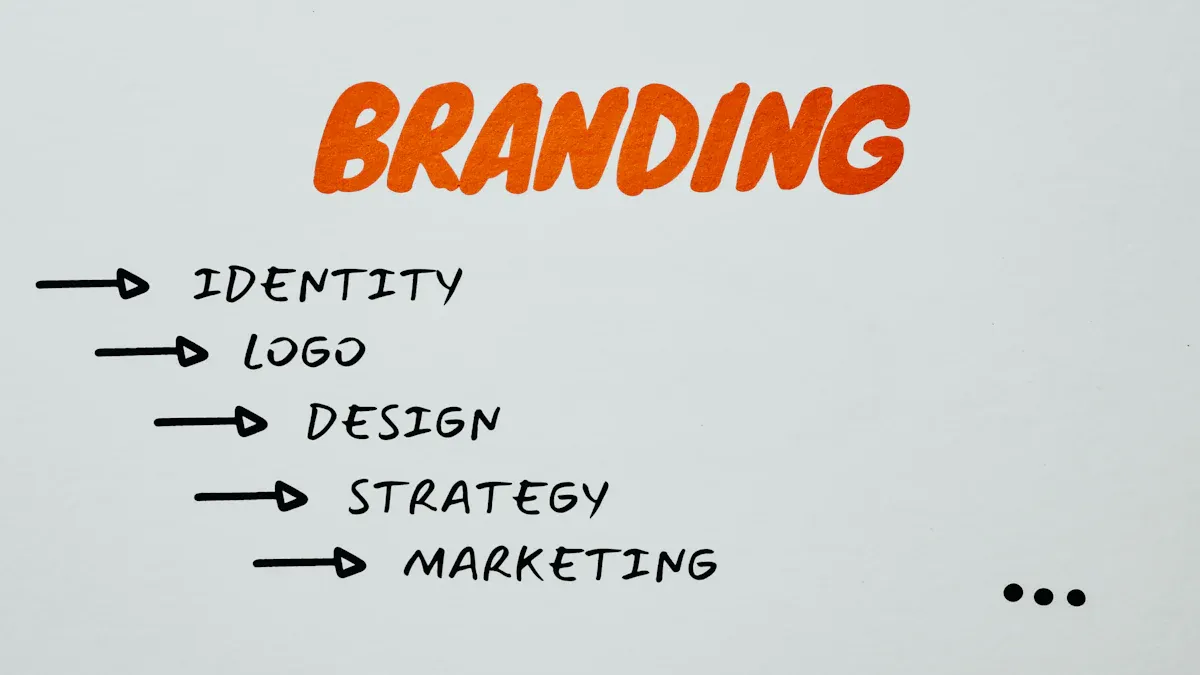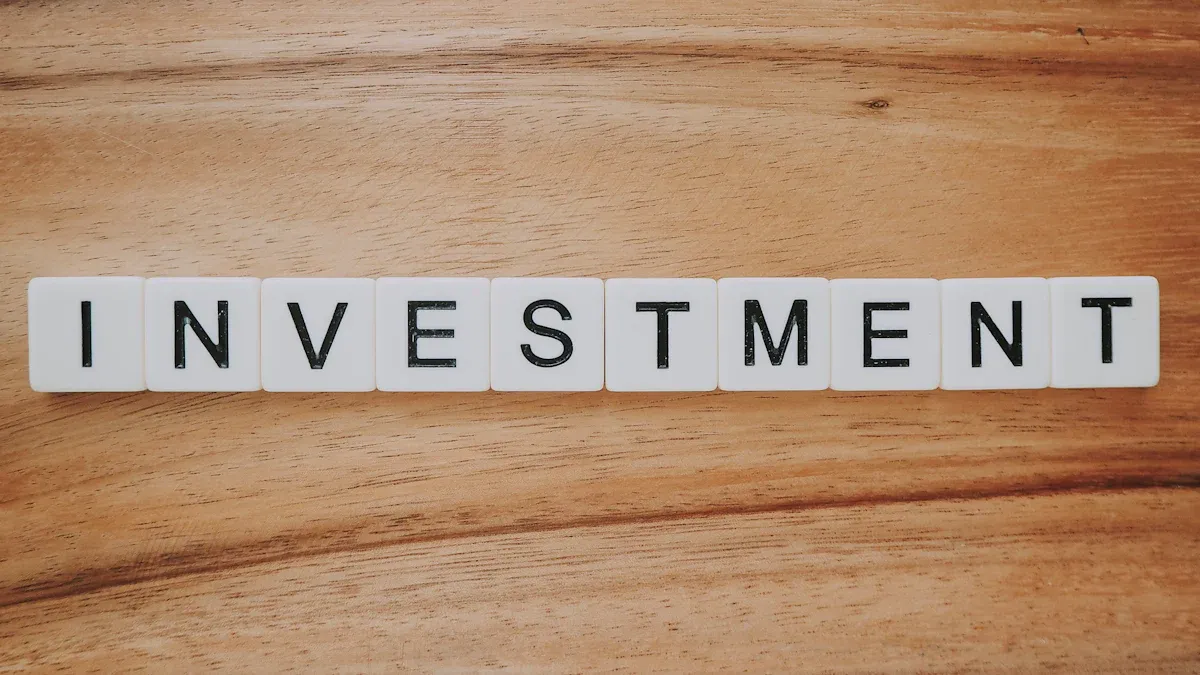
Does My Startup Need a Rebrand Before Fundraising?
Table Of Contents

Should you rebrand before you raise?
Maybe.
If your brand feels outdated or does not match your goals, you might confuse investors or even your own team. If your brand doesn’t align with what you stand for or where you’re headed, then you need to take a look at changing it.
The risk isn’t so much in messing up. It’s more in lac of commitment. If you change your brand, make sure it’s something that you will follow through on in every part of your organization. The curtains and carpet have to match.
Key Takeaways
Check if your brand matches your audience and goals. If it does not, people may get confused or turned off. Investors and your team might not understand your brand.
Watch for signs that show you need a rebrand. Old logos or bad news can hurt your fundraising. These problems make it harder to get money.
Make sure your brand shows what makes you special. Investors want to know why your startup is different. They look for what sets you apart.
Keep your branding the same everywhere. A strong brand helps people trust you. It also shows you are professional to investors.
Ask your team to help with rebranding. This helps your team work together on the new brand, and can establish brand on existing company culture.
Startup Rebrand: Is It Needed?

When Rebranding Is Essential
You may need a rebrand if your current brand no longer fits your audience or business goals. Startups often change quickly. Sometimes your original message or look does not match who you serve now. Here are some common signs that a rebrand is essential:
Your audience has changed. If your product or service now attracts a different group, your brand should reflect that shift.
Your visual identity feels outdated. An old logo or website can make your startup seem behind the times.
You have expanded or changed your business model. If you offer new products or enter new markets, your brand must show this growth.
You face negative press or customer backlash. A fresh identity can help you move past these issues.
Tip: A well-timed rebrand can boost how investors and customers see your company. For example, a SaaS startup doubled its Net Promoter Score from 16 to 32 within six months after rebranding. Another business saw a 30% drop in bounce rate and a 25% rise in session duration, showing better engagement and interest.
You can also spot misalignment with your target market by looking at key indicators:
Indicator | Description |
|---|---|
Lack of Awareness in Target Accounts | Your target market does not know your brand well. |
Long Sales Cycles | Sales take too long because leads are not ready or interested. |
Low Win-Rates | You close very few deals, which may mean your message is not clear. |
Leads Are Not Sales-Ready | Marketing brings in leads, but they do not want to buy yet. |
Low Conversion MQL to SQO | Many leads drop off before becoming real sales opportunities. |
If you notice these problems, your startup rebrand may help you connect better with your market and improve results.
When to Hold Off
You should wait to rebrand if your current brand still works for your audience and team. Sometimes, changing your identity too soon can cause confusion or even harm your progress. Here are reasons to hold off:
Your brand still matches your mission and speaks to your target customers.
You have strong engagement and good conversion rates.
Your team feels proud of your current identity.
You plan to fundraise soon and do not have time for a full rebrand.
Note: Rebranding too close to a fundraising round can confuse investors and customers. For example, when Overstock.com changed its name to “Beyond,” many people got confused, and the company lost visibility. Pizza Hut also faced backlash when it tried to become “The Hut,” losing some loyal fans.
If your marketing messages connect with your audience and your sales process runs smoothly, you may not need a rebrand right now. Focus on what works and save big changes for a better time.
Assess Your Brand
Value Proposition Clarity
Your brand should tell people what you offer. If your message is not clear, people may not pick you. Investors and customers need to know why you are special. There are ways to check if your value proposition stands out:
Method | Description |
|---|---|
Understanding user needs | Think about your product like a user would. Make sure your message solves their problems. |
Differentiating from competitors | Find what makes you different. Show how your brand is unique in the market. |
Customer feedback mechanisms | Ask customers what they think. Use surveys or questions to learn what they want and need. |
Constant refinement | Keep changing your message as your audience changes. Listen to the market and stay flexible. |
You can also see if your value proposition works by checking these numbers:
Metric | Description |
|---|---|
Conversion Rates | Check how many people become customers after seeing your message. |
Customer Feedback | Listen to what customers say about your offer. |
Net Promoter Score (NPS) | See if customers would tell others about you. |
Investors want a clear story. They want you to explain the problem in simple words. Show real customer stories and use real data to prove your message.
Mission Alignment
Your brand should match your company’s mission. If your mission and brand do not fit, people may get confused. Your team might feel frustrated too. You can check alignment by:
Defining your brand identity
Finding out who your stakeholders are
Watching how people see your brand
Getting feedback
Looking at your results
Make a brand scorecard with important KPIs. This helps you see if your plan supports your mission. Your team should show your values. Put these values into every part of your business. When your mission and brand work together, you do not miss chances. Your team will feel more motivated.
Consistency
Consistency helps people trust your brand. If your brand looks and sounds the same everywhere, people feel good about your business. You can keep your message the same by:
Making your brand identity clear.
Writing your identity in a style guide.
Checking your brand on all platforms.
To keep your brand the same, make clear rules for visuals and tone. Train your team often and use tools like templates to help everyone.
Studies show that being consistent can help you make more money. Investors like brands that look steady and strong. If you want to rebrand, keep your message the same everywhere. A good rebrand helps you stand out and builds trust.
Branding and Investors

First Impressions
Your brand is the first thing investors see. You want to look professional and ready to grow. Investors notice if your brand looks neat and matches everywhere. They check if your logo, website, and pitch deck fit your message. When your brand fits together, it shows you care about details. This helps investors trust you and your team.
A strong brand makes meetings feel important. It shows you care about your mission and values. Investors want to see you are organized and ready to grow. If your brand looks messy or old, investors may doubt you are ready.
You can use these ideas to check your first impression:
A brand that fits together shows you work well and care about details.
When everything matches, it shows you are organized and ready to grow.
Branding tells people your mission, vision, and values.
A neat brand makes meetings feel serious.
Branding helps build trust and brings in investors.
Your brand can help convince investors you have potential.
Standing Out
You need to be different when you show your startup rebrand. Investors look at many startups, so your brand must show what makes you special. Clear words and strong pictures help you get noticed. Investors want your materials to be clear and match everywhere. They want to see a good story and a professional look.
Stage | |
|---|---|
Seed Stage | Clear look, main message, brand parts that show vision, emotional pull. |
Series A | Professional website, good investor materials, better message, clear value. |
Series B | Full brand rules, matching everywhere, inside systems to help brand grow. |
Special branding ideas can help you raise more money. Smart brand messages can help you get more funds. As more people know your brand, you may raise more money. A strong brand helps people trust you. When your brand matches everywhere, you can build long-term relationships with donors and investors. When you rebrand, focus on what makes your startup special. Good branding helps people feel connected and want to support your mission.
Impact on Marketing and Team
Marketing Effectiveness
A startup rebrand can change how people see your company. When you update your brand, customers understand what you offer better. It also helps them remember your business more easily. A new look or message can help your marketing work better if done well.
Finding | Description |
|---|---|
People who liked your old brand may feel even more loyal after a smart rebrand. | |
Perceived Brand Similarity | If your new brand feels familiar, customers accept it faster and want to return. |
Mediating Role | A strong brand image makes people feel good about your company and want to visit again. |
You should watch important marketing numbers to see if your rebrand works. These include:
How customers feel at every step, like on your website or app.
How well people know and like your brand in your market.
Net promoter score, which shows if people will tell others about you.
More new customers and higher engagement.
Tip: After a rebrand, check if your marketing gets better results. Look for more people buying and more sales. Investors notice when your marketing improves.
Team Morale
Your team feels the effects of a rebrand right away. Some people get excited about the new changes. Others may feel unsure and want to see real results before they trust it.
Rebranding is a big change that affects everyone in the company, so it’s important to get employees involved and interested. If the team is not included from the start, some problems can happen. Employees may not like the changes if they do not know why the rebrand is happening or if they feel left out. This can hurt morale and make people less productive.
You might see different reactions:
Some team members feel happy and proud of the new brand.
Others are curious and want to learn more.
A few may wait to see if the rebrand really helps.
When you include your team early, you build trust and make morale better. A clear message helps everyone work toward the same goal. This teamwork makes your startup stronger and more appealing to investors.
Startup Rebrand Decision Guide
Checklist
You can use this checklist to decide if your startup needs a rebrand before your next funding round. Each step helps you look at your brand from different angles. Try to involve people outside your company for honest feedback. This process gives you a clear view of your strengths and future goals.
Ask an outsider to lead a conversation about your brand. You get new ideas and spot blind spots.
Talk with your team and stakeholders about where your company is heading. Listen to what they think works well.
Brainstorm new names and branding ideas. Write down what makes your company unique and how you want others to see you.
Tip: Use these steps to make sure your rebranding effort matches your mission and connects with your audience. A strong brand helps you stand out during fundraising.
Pitfalls
Many startups face problems when they rush into a rebrand before fundraising. You can avoid these mistakes by planning ahead and keeping your message clear.
Mixed messages confuse investors about your mission and values.
Focusing too much on product features hides your bigger vision.
Missing emotional connections makes your story less engaging.
Forgettable branding gets lost among other pitches.
Weak branding can make investors undervalue your company.
Note: You should check your messaging often. Make sure your rebranding effort helps people remember your startup and see its full value.
Risks of Rebranding
Disruption
A rebranding effort can shake up your daily business. You might see confusion among your team or customers. People may not recognize your new look right away. Some customers could feel lost if you change your logo or name. Your team may need time to learn the new brand rules. This can slow down work and cause mistakes.
You may also face these problems:
Customers might not trust your new image at first.
Your website and social media may show old and new branding at the same time.
Sales teams may use the wrong message in meetings.
You could spend more money fixing mistakes.
Tip: You can lower disruption by planning each step. Train your team early and update all materials at once. Clear communication helps everyone adjust faster.
Timing Issues
The timing of your rebrand matters a lot. If you change your brand too close to a funding round, you risk confusing investors. They may not know what your company stands for. You need to keep your message steady so investors trust you.
Here is a table that shows common timing issues and their impact:
Timing Issue | Impact on Rebranding and Fundraising |
|---|---|
Market Conditions | In a down market, investors may hesitate, and your company could get a lower value. |
Timing of Fundraising Efforts | If you raise money too early or too late, you may miss growth or lose investor interest. |
Strategy Adaptation | You may need to try new ways to raise money, like crowdfunding, if the market changes. |
You should also watch out for these timing problems:
Fundraising too quickly can hurt growth if you cannot use the money well.
Keeping your brand message the same is key for investor trust.
Note: Always match your rebrand with your business goals and market trends. Good timing helps you get the most from your new brand and your funding round.
When you decide if your startup needs a rebrand before fundraising, focus on these key points:
Know your audience and base choices on their needs, not just your own.
Use client interviews and market research to guide your direction.
Make sure your brand shows clarity and bold vision.
You can take these steps:
Craft a message that connects with your audience’s values.
Talk with employees, customers, and partners for feedback.
Update your visual identity to match your mission and market.
Weigh the benefits and risks using the checklist. The best path depends on your unique goals.
FAQ
What signs show my startup needs a rebrand before fundraising?
You notice your message does not connect with your audience. Your team feels confused about your mission. Investors ask questions about your brand image. These signs mean you should consider a rebrand.
How long does a rebrand usually take for startups?
You can expect a rebrand to take several weeks. You need time to plan, design, and launch new materials. Fast changes may cause mistakes, so set a clear schedule.
Will a rebrand help attract more investors?
You show investors you care about details when you update your brand. A strong brand image builds trust. Investors want to see a clear story and a professional look.
Should I rebrand before or after raising funds?
You should rebrand before fundraising if your brand does not match your goals. A clear brand helps you stand out. If you wait, you may miss chances for post-funding growth.








